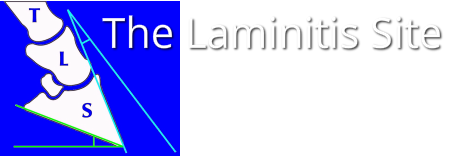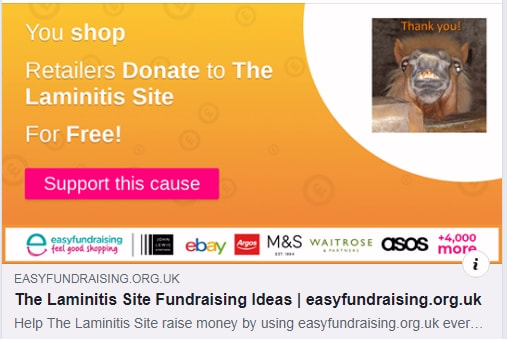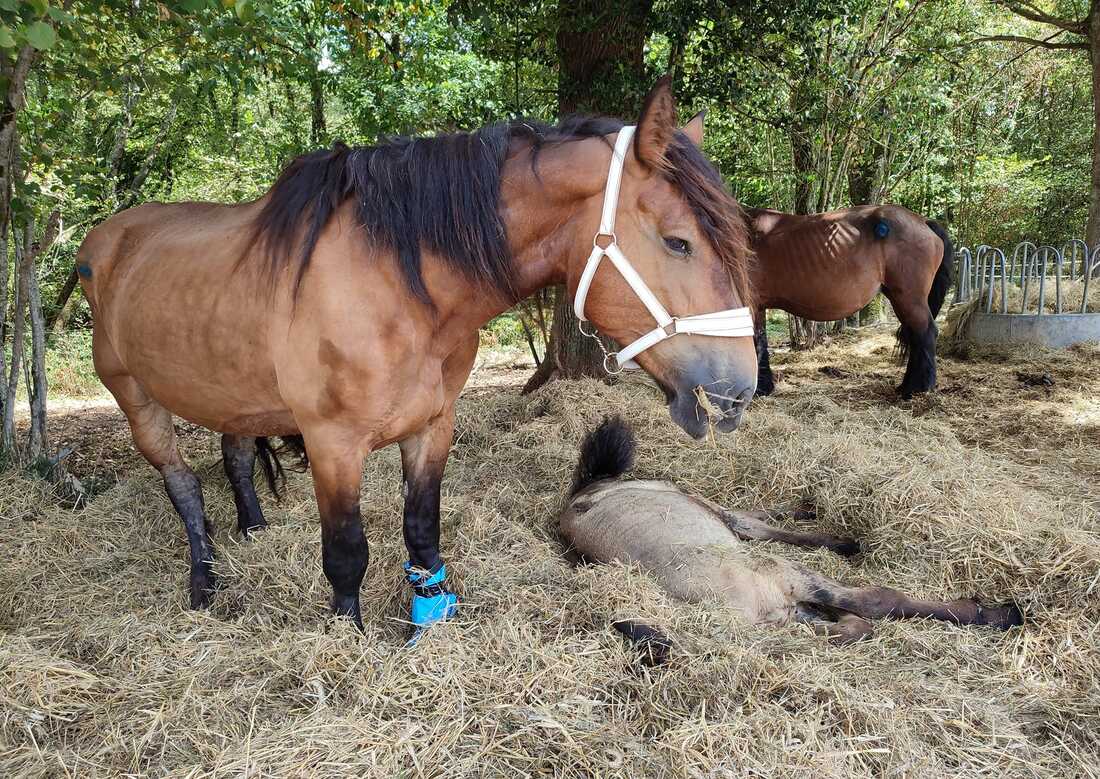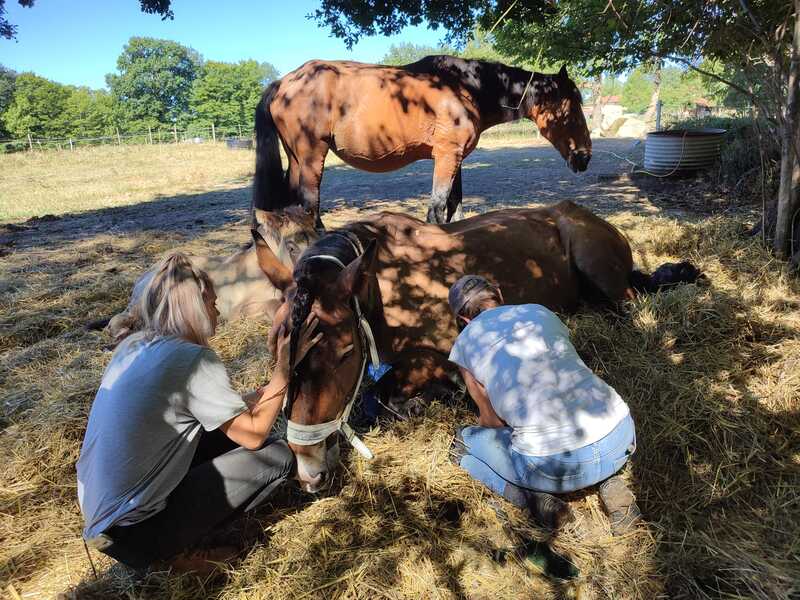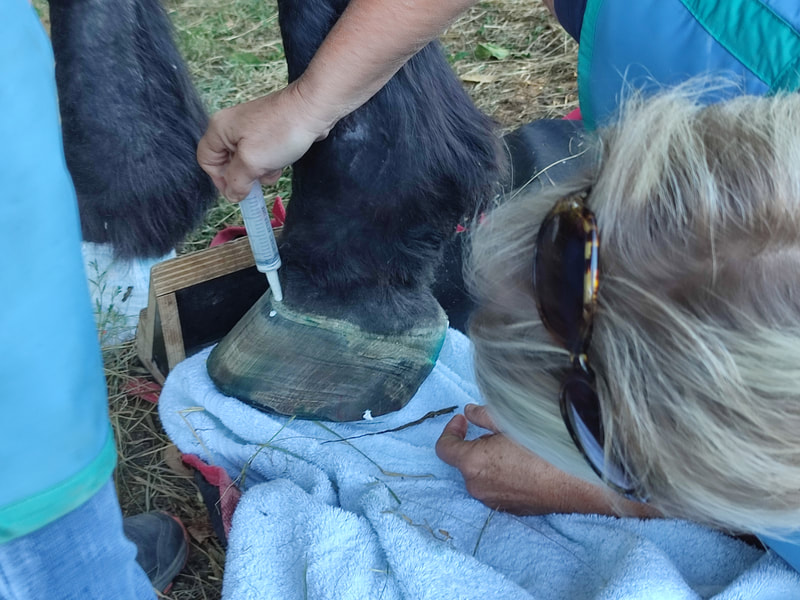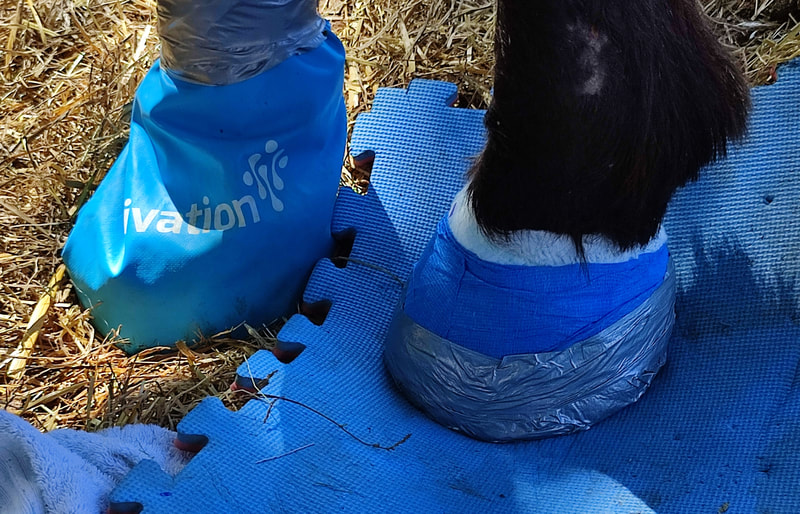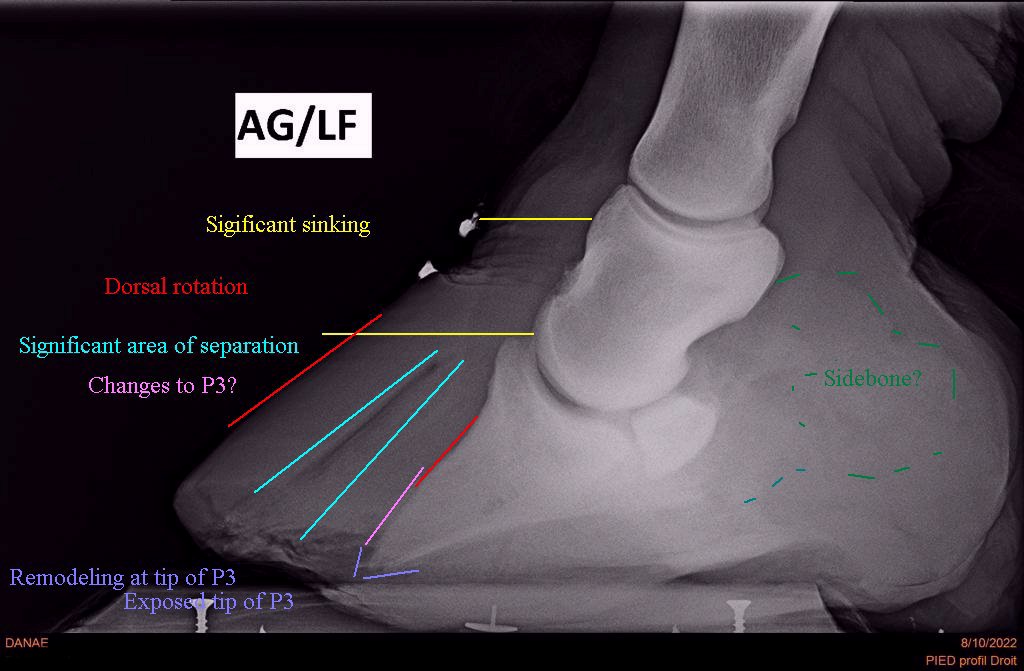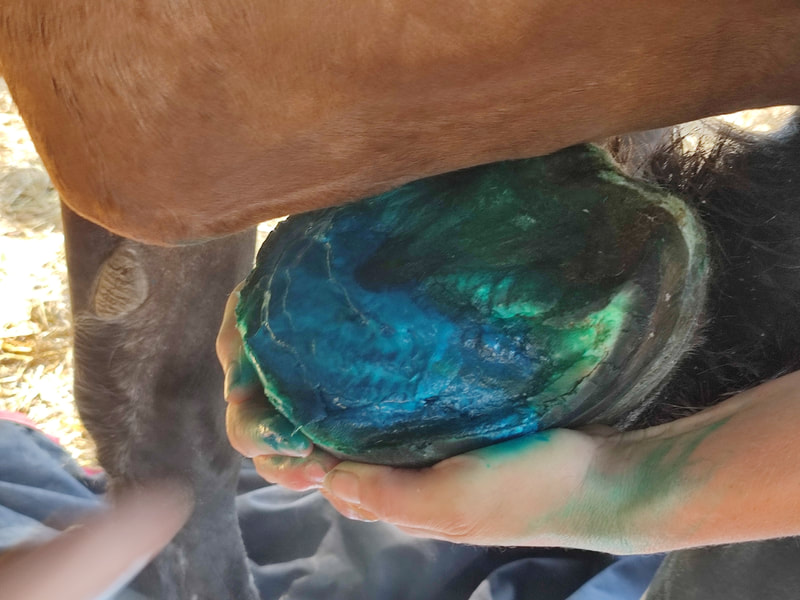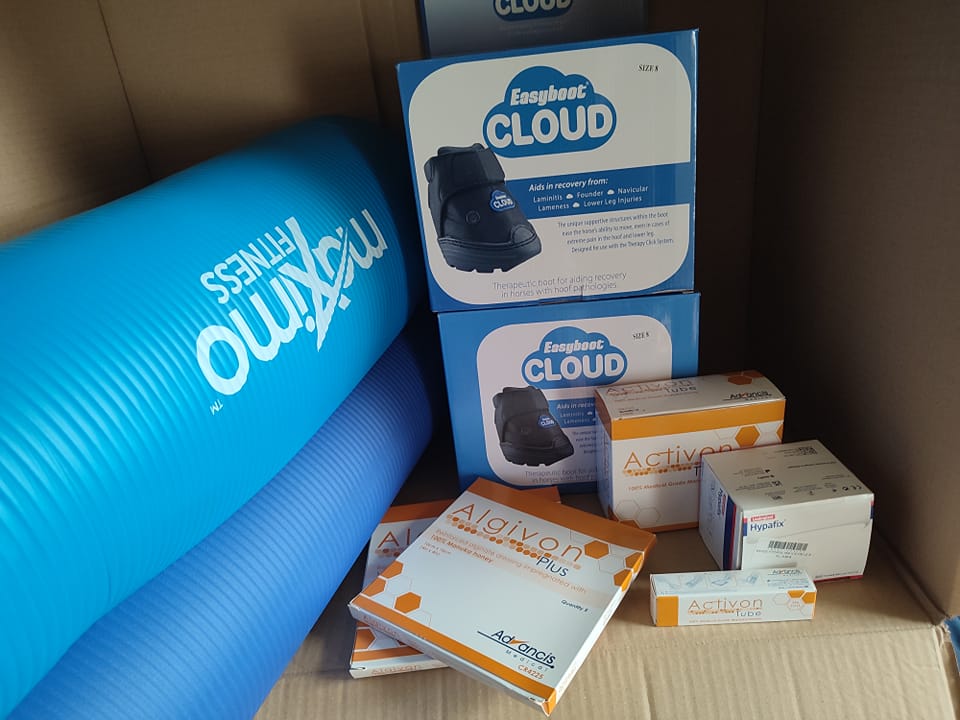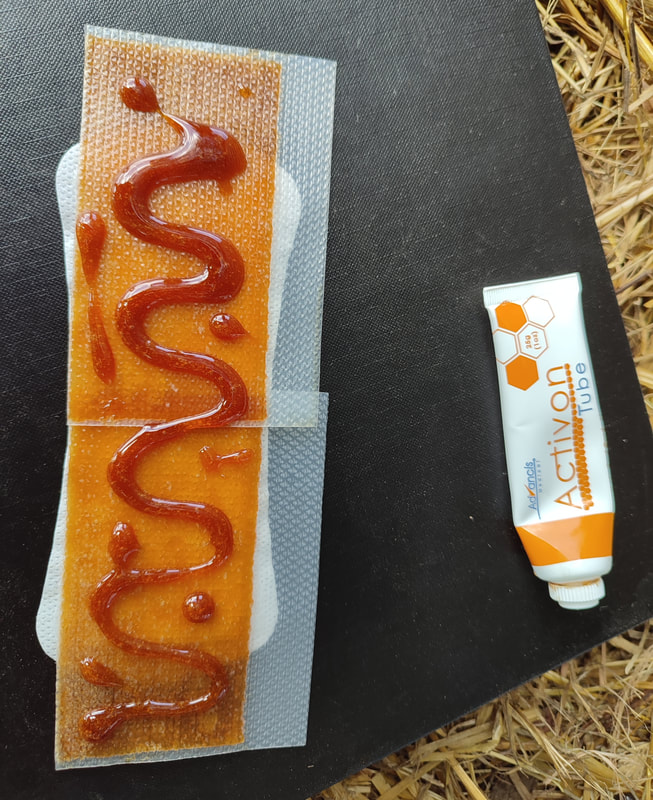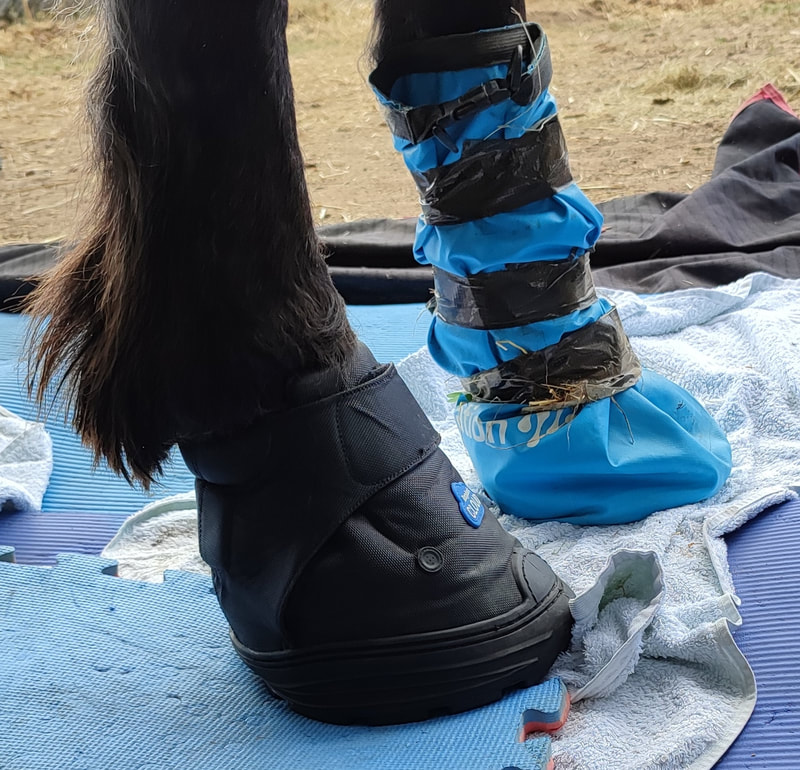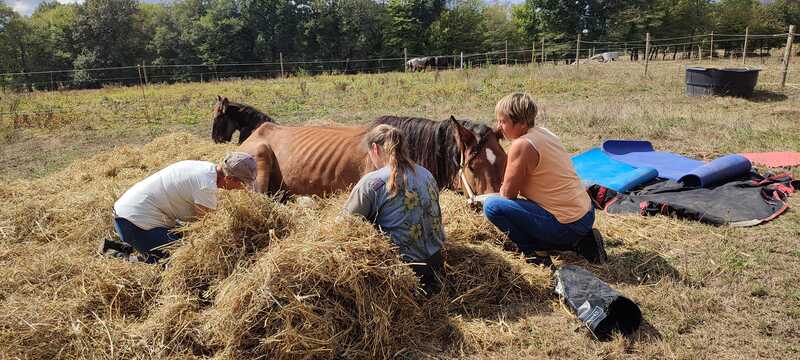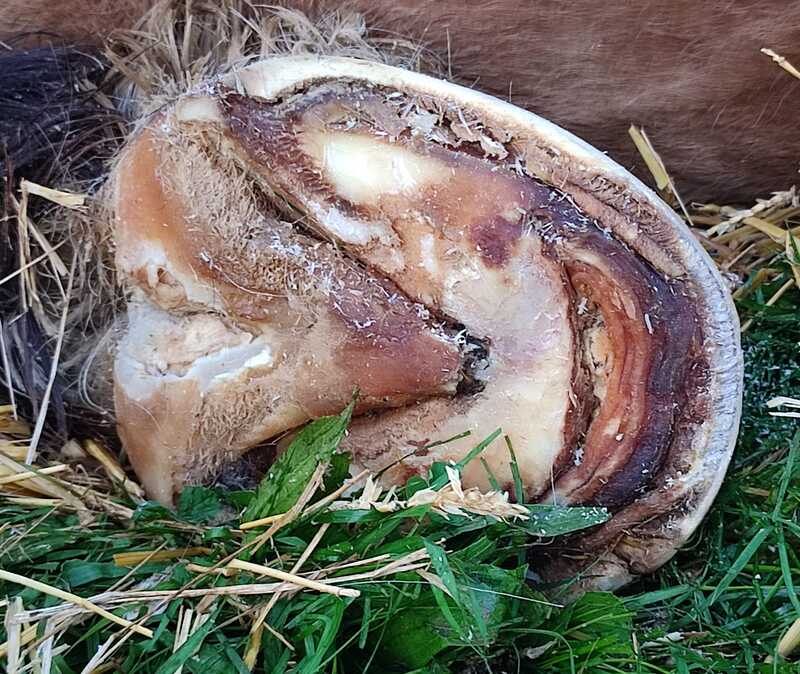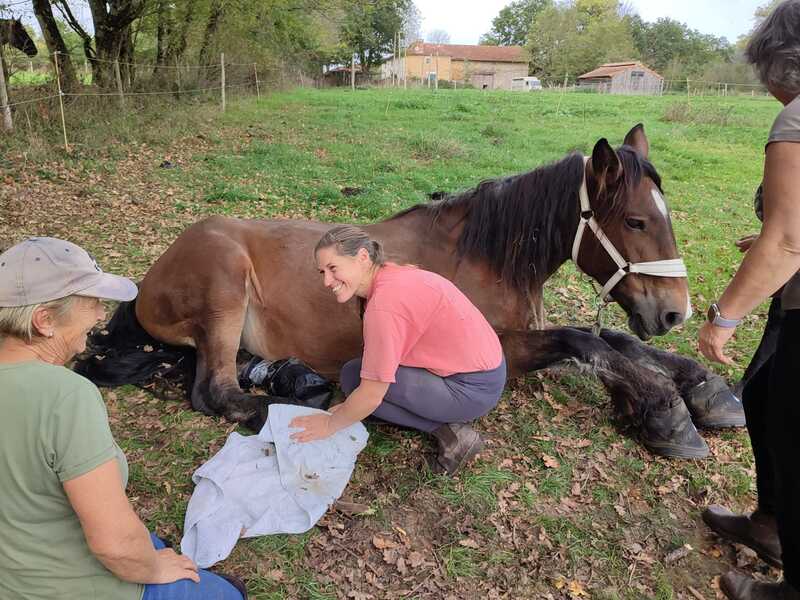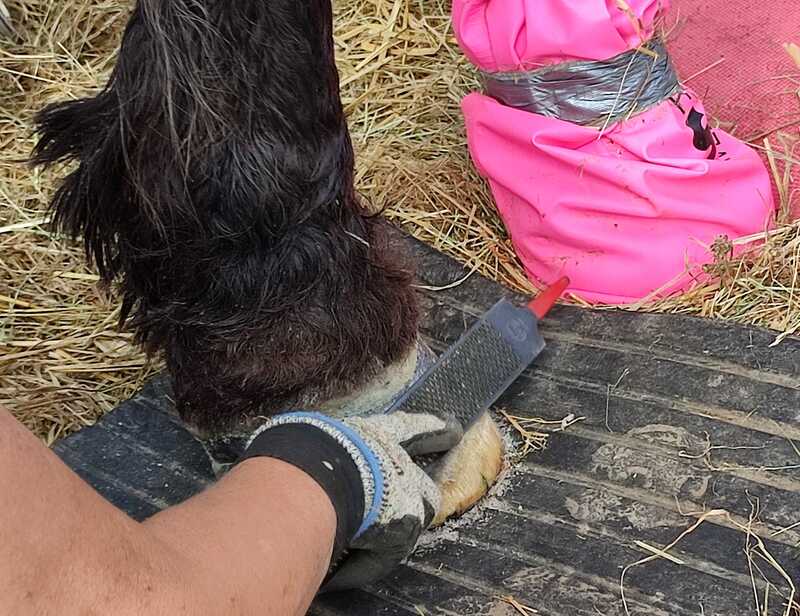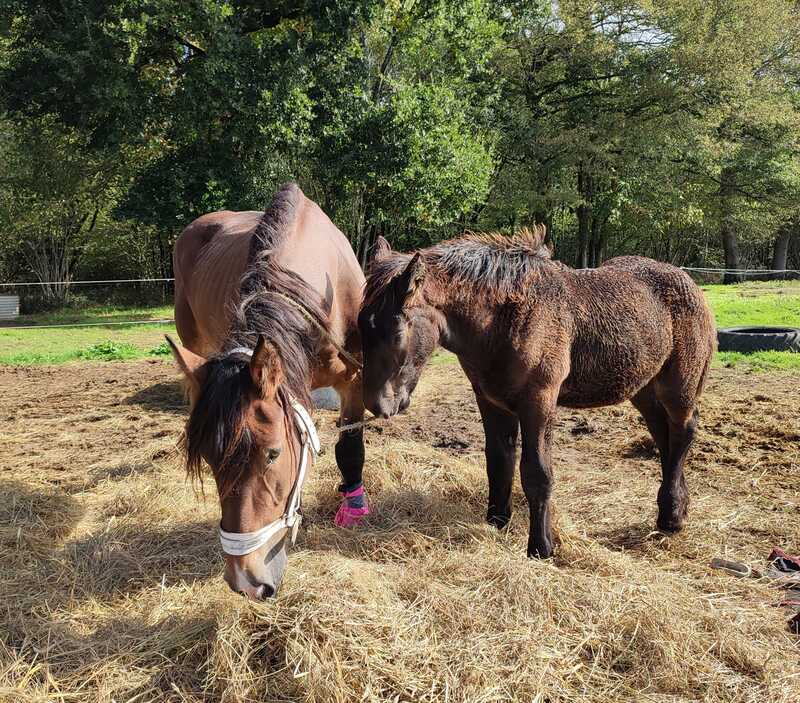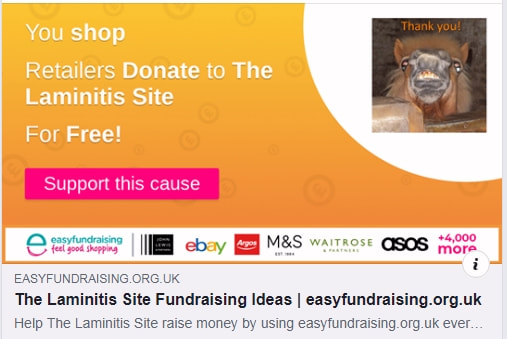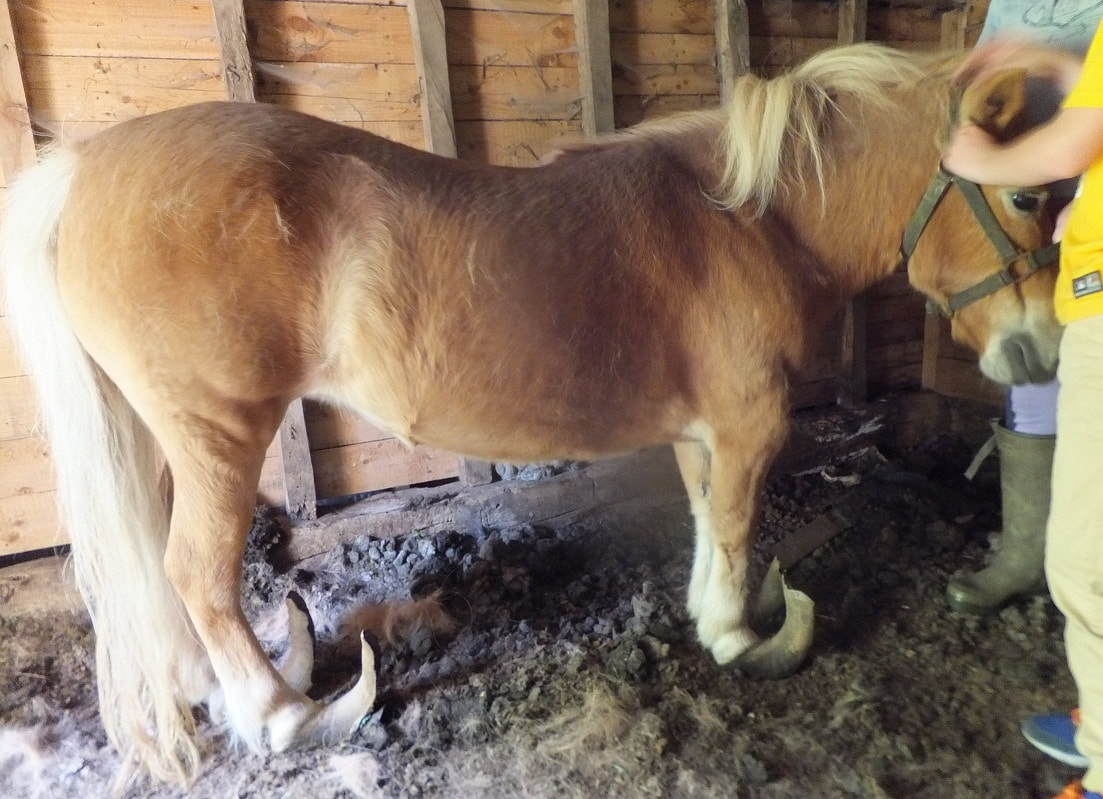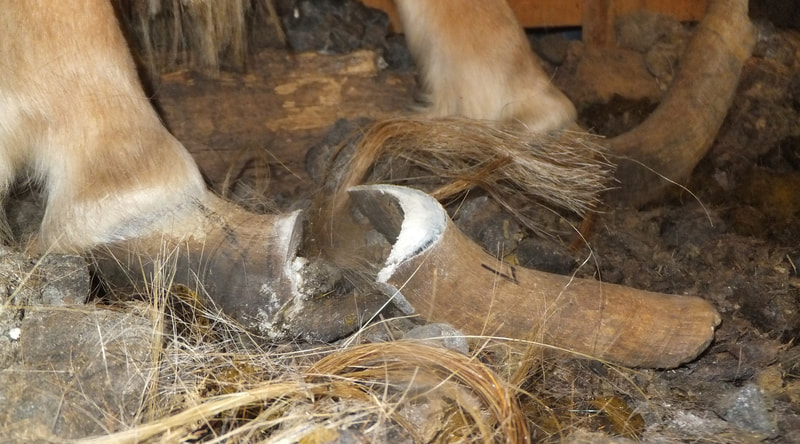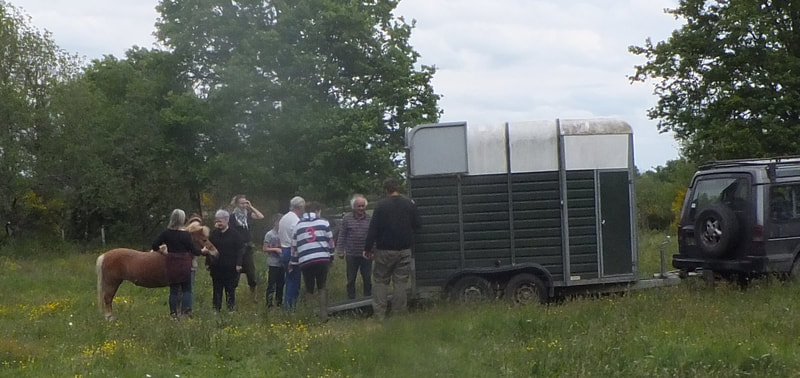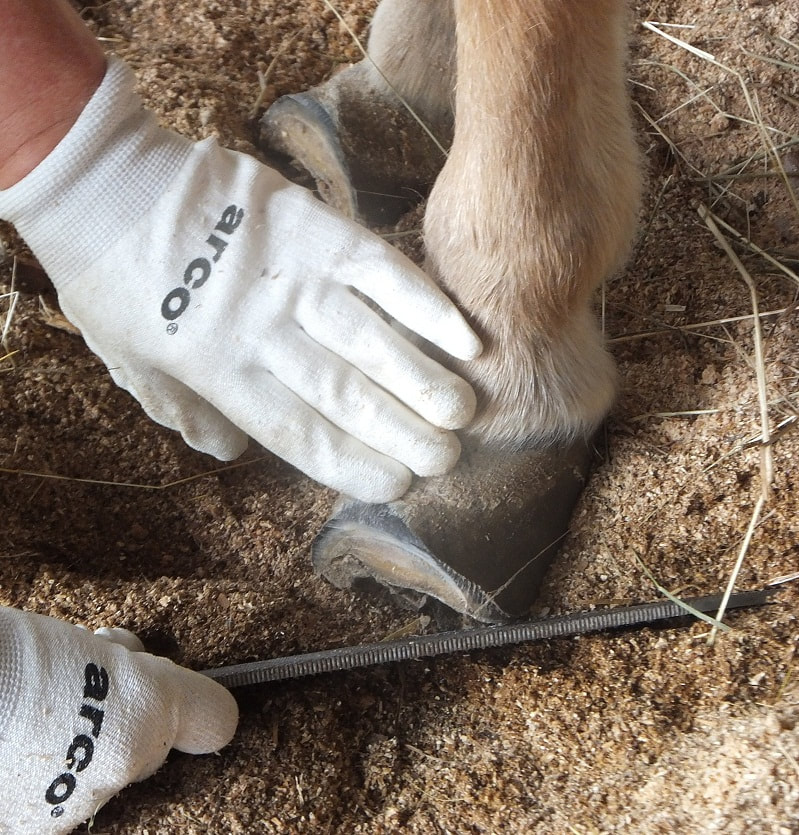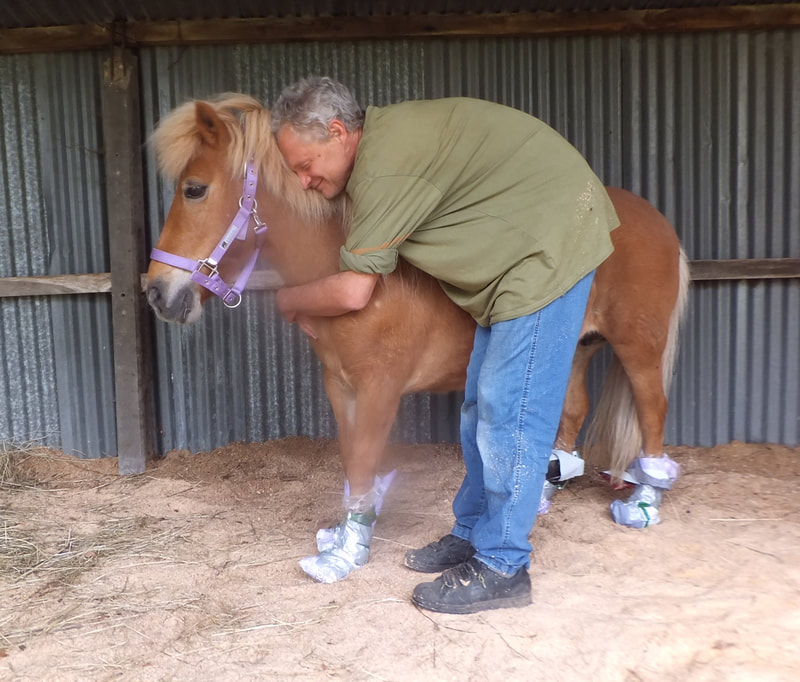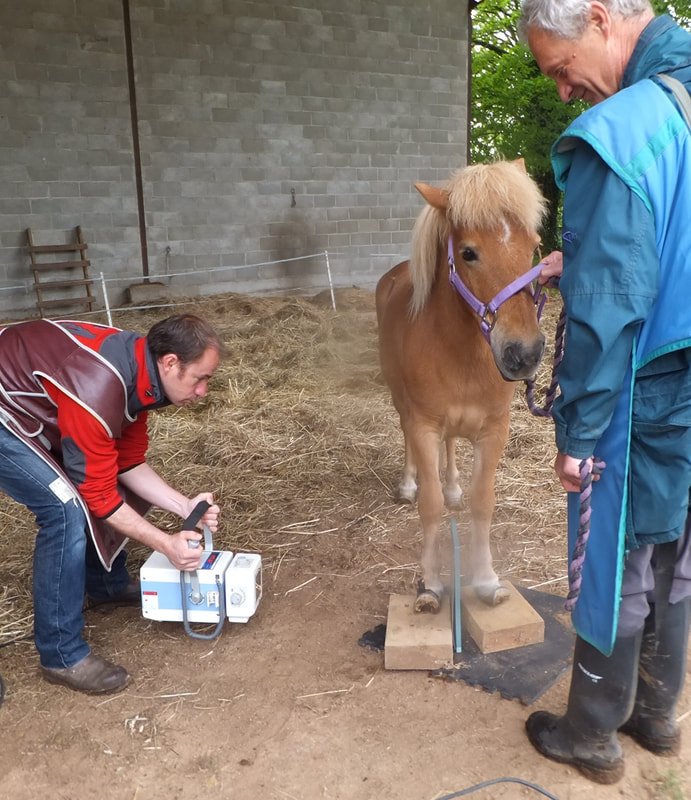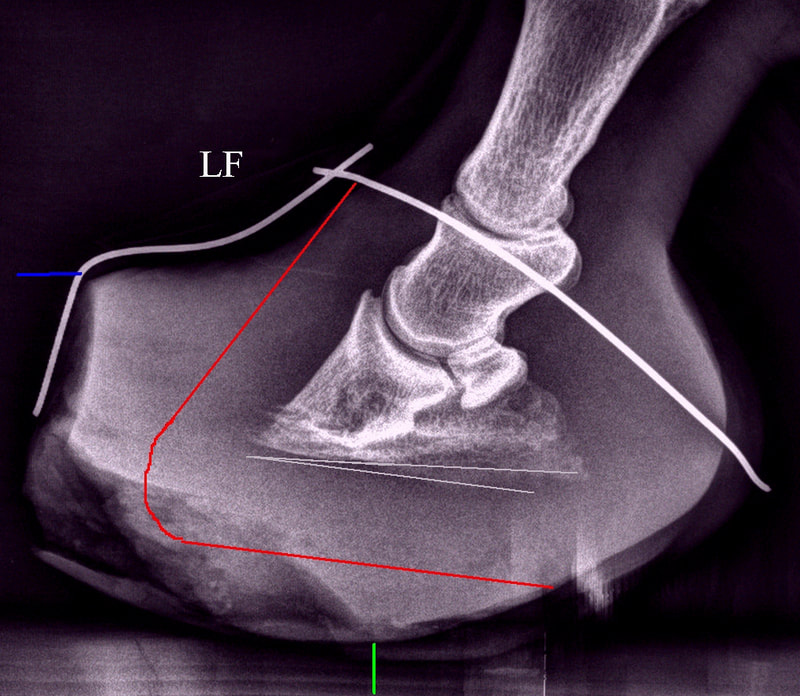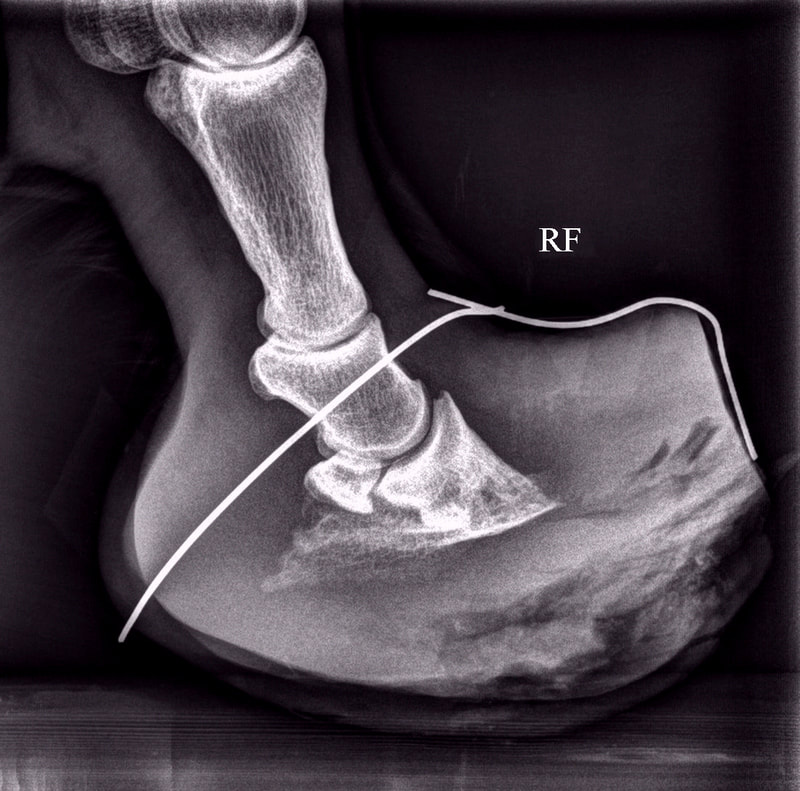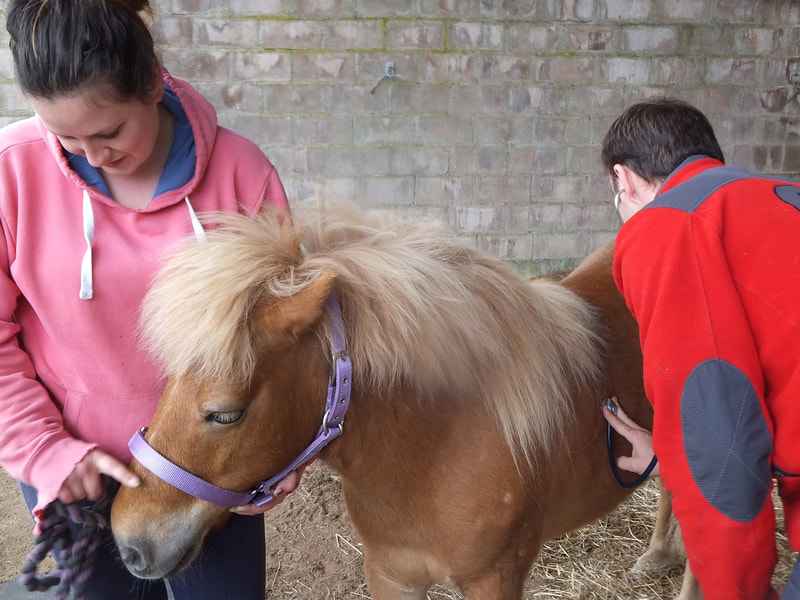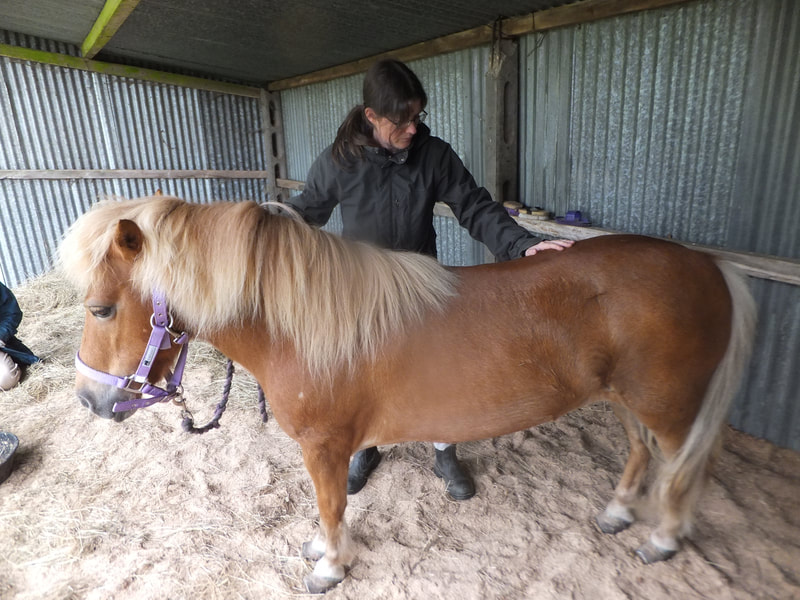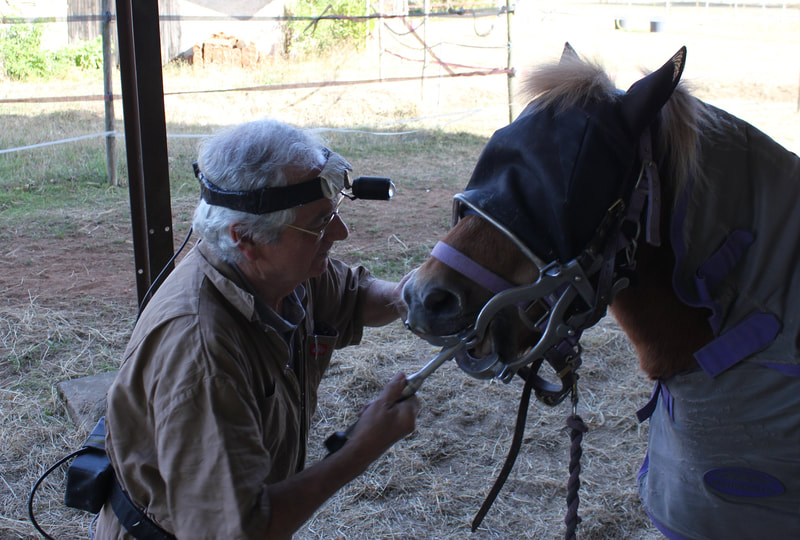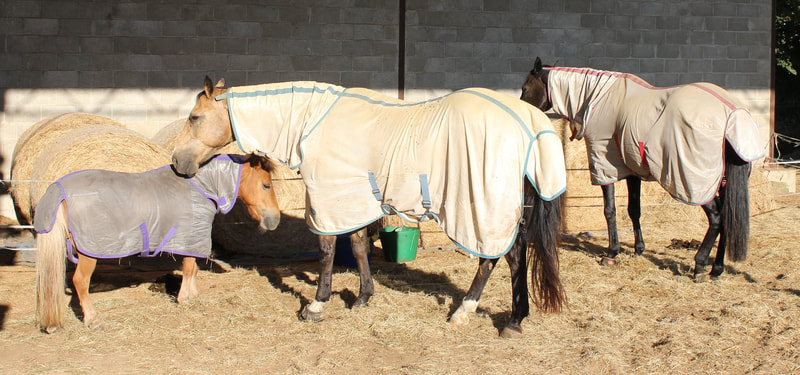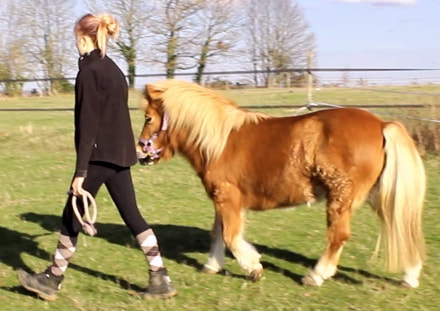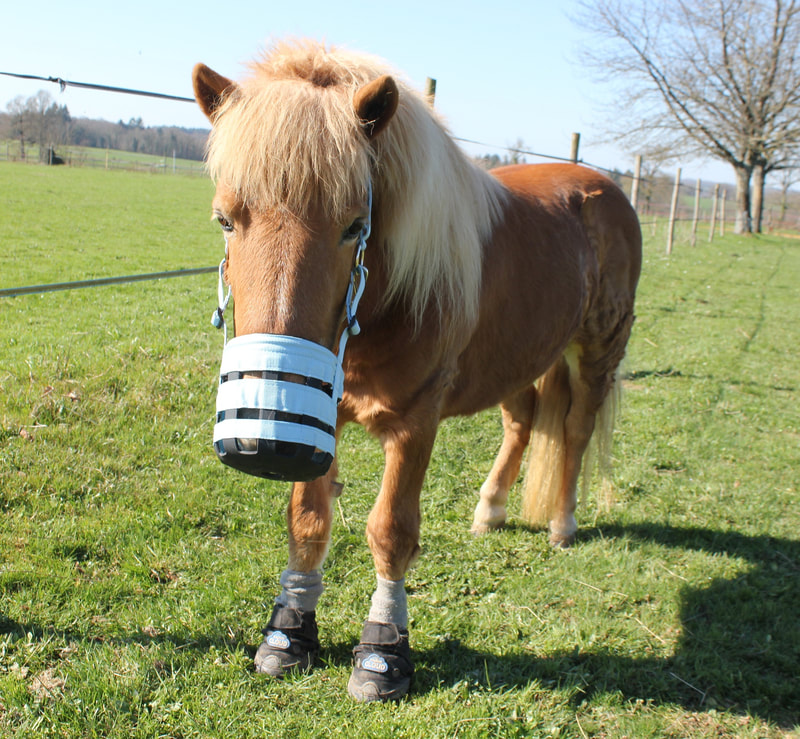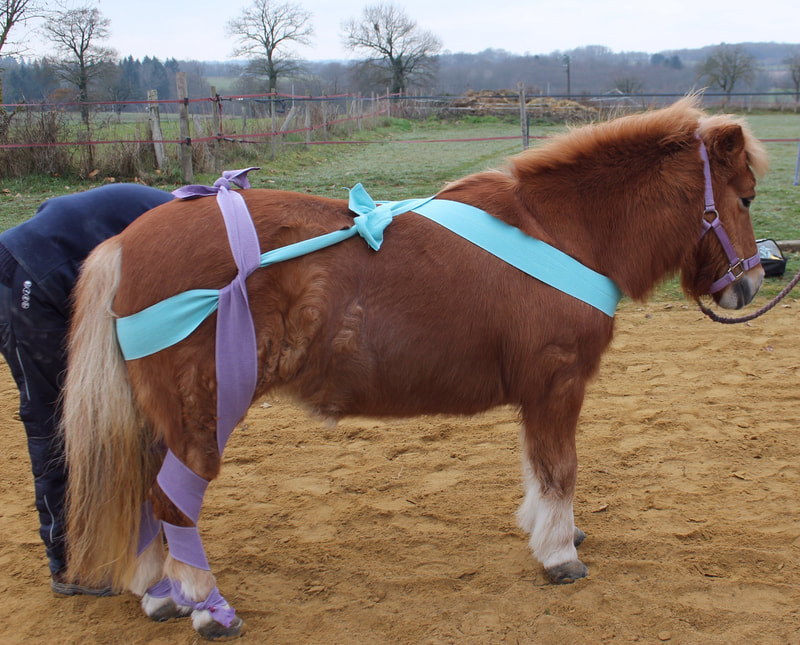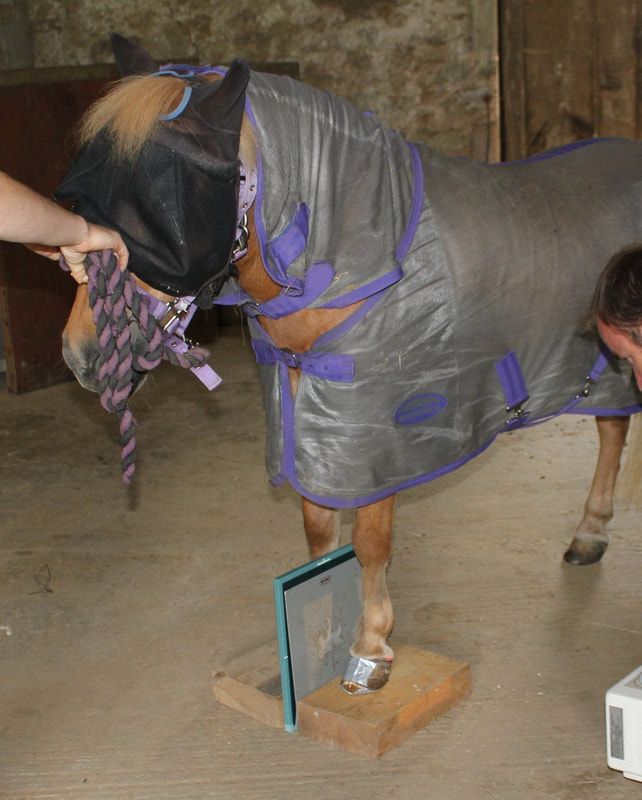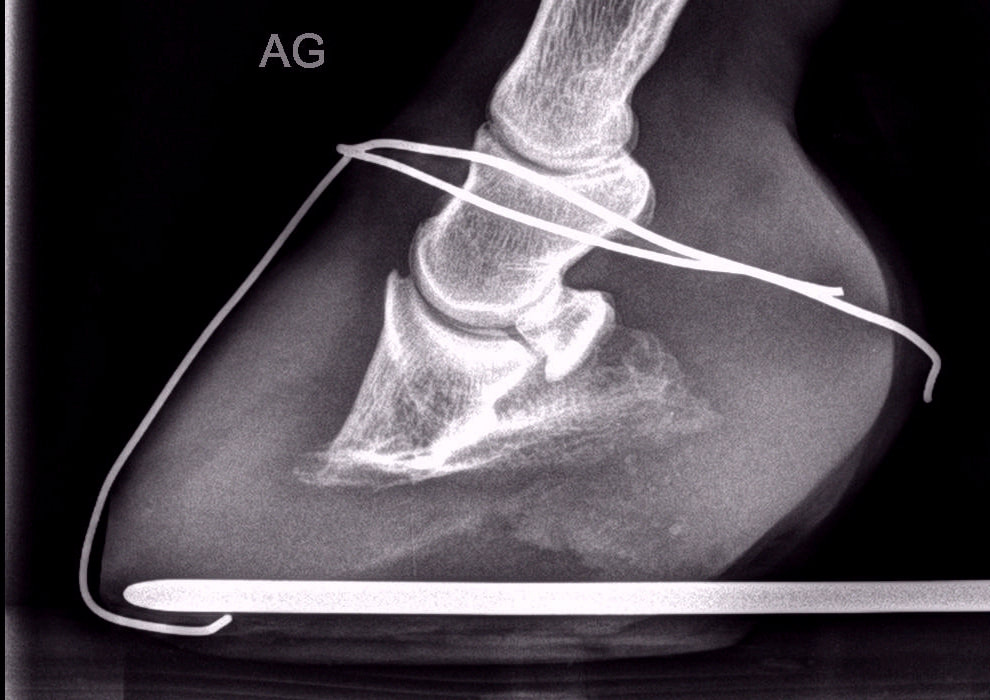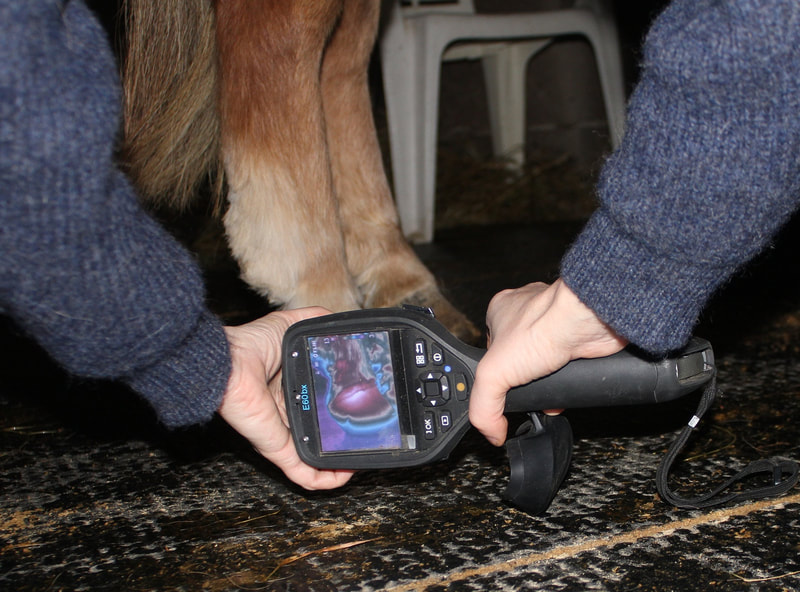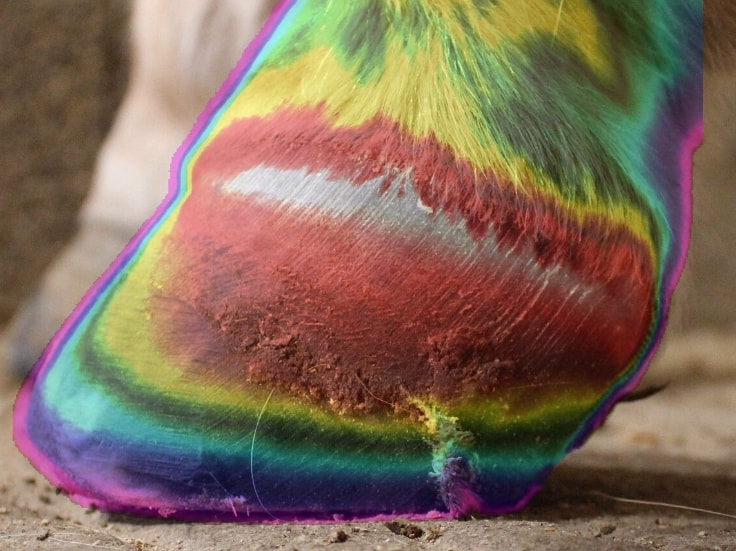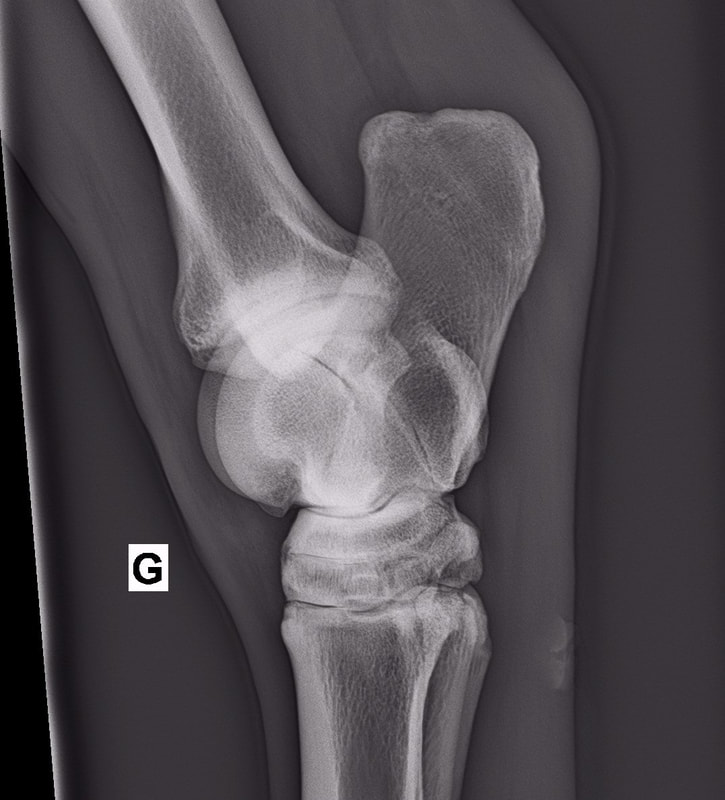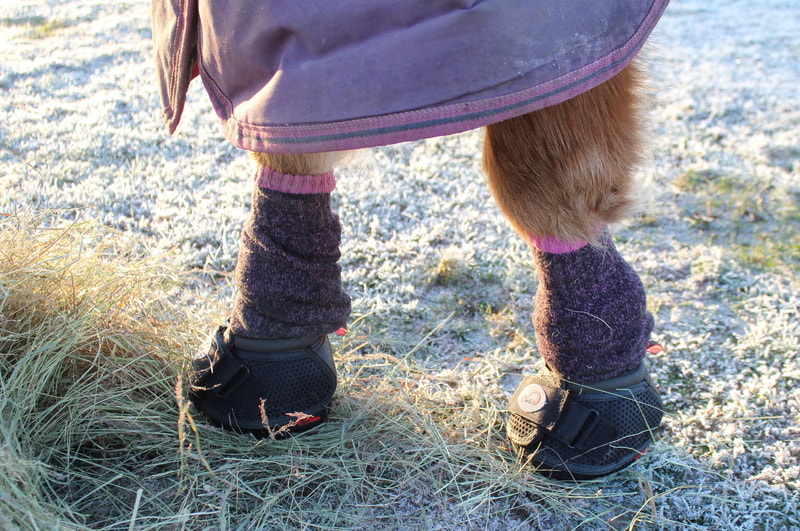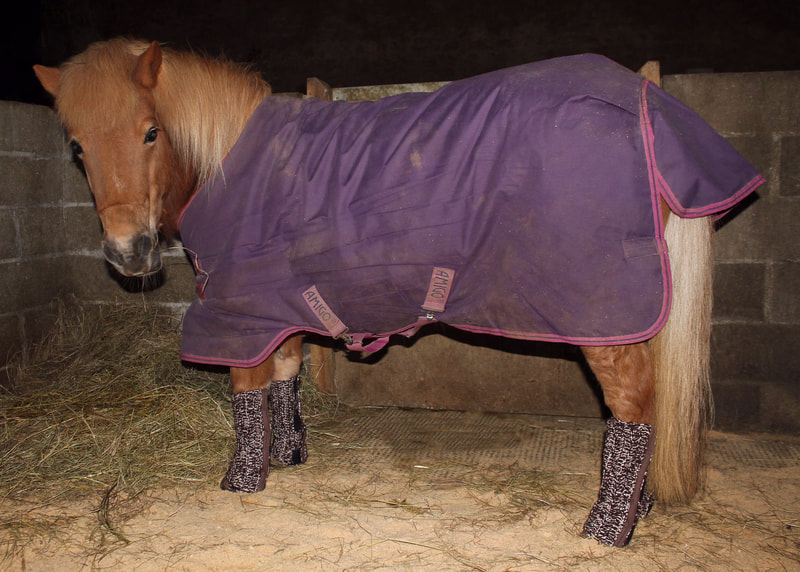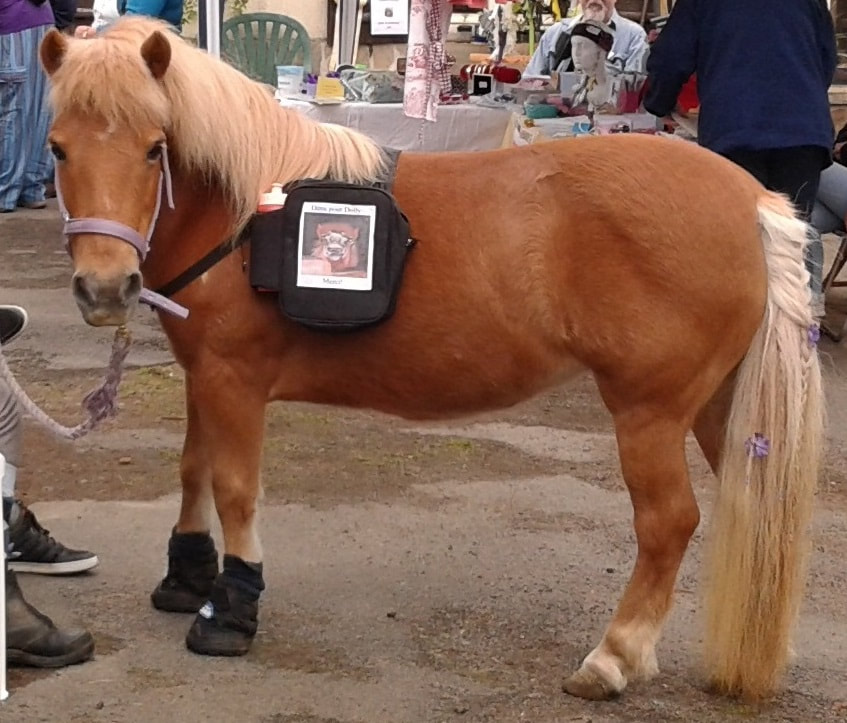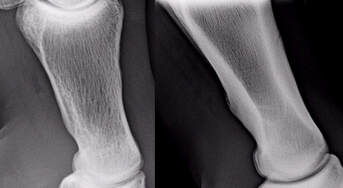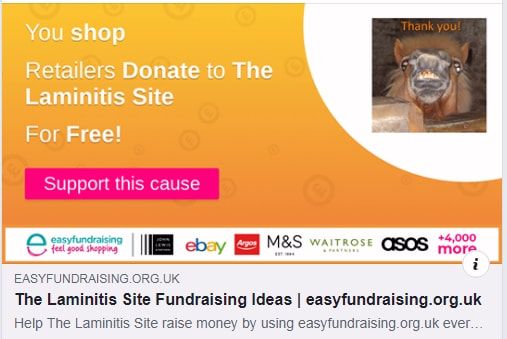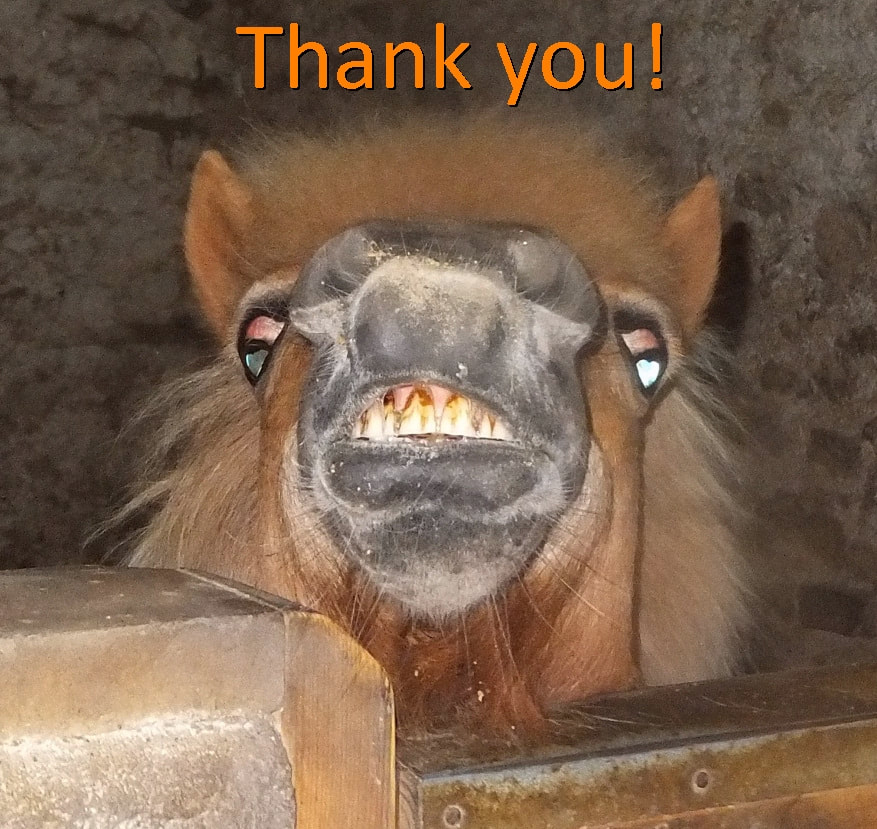|
Current appeals
|
|
Donate through PayPal Giving Fund
With a Paypal account, you can donate an amount of your choice through PayPal Giving Fund. 100% of your donation will reach The Laminitis Site, and PayPal will collect Gift Aid, if applicable, on our behalf, increasing your donation by 25% at no cost to you. Donate through Just Giving Become a Friend of The Laminitis Site
If you would like to learn more about laminitis, EMS and PPID, you might like to make an annual donation of £12 and join Friends of The Laminitis Site and its Facebook support group, where you can get information and support for any horse you care for affected by these conditions. Shop online through Easy Fundraising to raise money for TLS without it costing you a penny!
Supporting The Laminitis Site doesn’t have to cost you anything! Over 7,000 shops and sites will donate to The Laminitis Site for free when you use #easyfundraising to shop online – including Ebay, Tesco, Sainburys, John Lewis, M&S, Amazon, Argos, Asda, Boots, Lakeland, Waitrose… If you haven’t signed up yet, it’s easy and your donation won’t cost you a penny https://www.easyfundraising.org.uk/causes/thelaminitissite/… Please remember to use #easyfundraising every time you shop online to help The Laminitis Site to help horses and ponies with laminitis. |
Previous appeals
Danae
Can you help us to buy medical treatment and hoof care as we battle to save Danae, an endangered Poitevin mare, after she suffered pedal (coffin) bone penetrations as a result of an infection after foaling.
Danae is a 9 year old Poitevin mare, an endangered breed of which there are only around 300 breeding horses in the world. Danae had her first foal in May 2022, but developed an infection after foaling. The infection was treated and Danae appeared to make a full recovery, but in July she suddenly became lame when her pedal (coffin) bones penetrated the soles on both front feet, shortly followed by her left hind, with her right hind clearly very close to penetrating. With euthanasia almost certain if we couldn't make a difference quickly, Danae was referred to The Laminitis Site, and weekly visits started in August to trim and treat her feet.
Moving Danae and her foal wasn't an option, so her rehabilitation has taken place in a field, first in a heatwave and then cold and wet weather, which greatly increased the already huge challenge of trying to realign the large flared feet of a draft horse who has never been happy to have her feet handled, whilst keeping her feet clean and well protected!
We had previously helped several horses to recover from laminitis after their pedal bones had been exposed, but nothing prepared us for the amount of pedal bone that we saw on our first visit to Danae, and honestly, at that first visit we didn't think she had a chance of recovery.
However, incredibly Danae was not showing signs of significant pain, she was eating, drinking, going to the toilet, showing interest in her surroundings and feeding and interacting with her foal, so her owner and vet decided there was nothing to lose, and we started frequent visits to trim and treat her feet.
X-rays of her front feet showed significant sinking and dorsal rotation with an area of separation running the full length of the laminae, suggesting that the front of her hoof was not connected to her bone. Trimming commenced to bring her toes and breakover back to the true white line to reduce further separation, and to put the bottom of the feet in two planes to encourage her to weight the more comfortable back of her feet. Her exposed bones had been in mud and dung. Her feet were cleaned and soaked in Cleantrax. Initially a broad spectrum topical antibiotic spray was used on the exposed bones, but although this did keep infection under control, we felt we were not seeing the sole growth that we wanted, and after 5 weeks and following much research and consultation, we changed to applying medical honey to her exposed bones. Her feet were kept wrapped, initially in "nappy boots" - several nappies held on with Vetwrap and duct tape - and as soon as her feet were small enough we bought the largest Cloud boots for her front feet.
Below are some photos of Danae's rehabilitation; we haven't shown any photos of her exposed bones as some people may find these upsetting. More photos, details and technical information, including photos of her feet and exposed pedal bones, can be found on Danae's rehabilitation page:
Danae
Moving Danae and her foal wasn't an option, so her rehabilitation has taken place in a field, first in a heatwave and then cold and wet weather, which greatly increased the already huge challenge of trying to realign the large flared feet of a draft horse who has never been happy to have her feet handled, whilst keeping her feet clean and well protected!
We had previously helped several horses to recover from laminitis after their pedal bones had been exposed, but nothing prepared us for the amount of pedal bone that we saw on our first visit to Danae, and honestly, at that first visit we didn't think she had a chance of recovery.
However, incredibly Danae was not showing signs of significant pain, she was eating, drinking, going to the toilet, showing interest in her surroundings and feeding and interacting with her foal, so her owner and vet decided there was nothing to lose, and we started frequent visits to trim and treat her feet.
X-rays of her front feet showed significant sinking and dorsal rotation with an area of separation running the full length of the laminae, suggesting that the front of her hoof was not connected to her bone. Trimming commenced to bring her toes and breakover back to the true white line to reduce further separation, and to put the bottom of the feet in two planes to encourage her to weight the more comfortable back of her feet. Her exposed bones had been in mud and dung. Her feet were cleaned and soaked in Cleantrax. Initially a broad spectrum topical antibiotic spray was used on the exposed bones, but although this did keep infection under control, we felt we were not seeing the sole growth that we wanted, and after 5 weeks and following much research and consultation, we changed to applying medical honey to her exposed bones. Her feet were kept wrapped, initially in "nappy boots" - several nappies held on with Vetwrap and duct tape - and as soon as her feet were small enough we bought the largest Cloud boots for her front feet.
Below are some photos of Danae's rehabilitation; we haven't shown any photos of her exposed bones as some people may find these upsetting. More photos, details and technical information, including photos of her feet and exposed pedal bones, can be found on Danae's rehabilitation page:
Danae
|
Donate through PayPal Giving Fund
With a Paypal account, you can donate an amount of your choice through PayPal Giving Fund. 100% of your donation will reach The Laminitis Site, and PayPal will collect Gift Aid, if applicable, on our behalf, increasing your donation by 25% at no cost to you. |
|
Become a Friend of The Laminitis Site
If you would like to learn more about laminitis, EMS and PPID, you might like to make an annual donation of £12 and join Friends of The Laminitis Site and its Facebook support group, where you can get information and support for any horse you care for affected by these conditions. |
|
Shop online through Easy Fundraising to raise money for TLS without it costing you a penny!
Supporting The Laminitis Site doesn’t have to cost you anything! Over 7,000 shops and sites will donate to The Laminitis Site for free when you use #easyfundraising to shop online – including Ebay, Tesco, Sainburys, John Lewis, M&S, Amazon, Argos, Asda, Boots, Lakeland, Waitrose… If you haven’t signed up yet, it’s easy and your donation won’t cost you a penny https://www.easyfundraising.org.uk/causes/thelaminitissite/… Please remember to use #easyfundraising every time you shop online to help The Laminitis Site to help horses and ponies with laminitis. |
Dolly
Sadly we lost Dolly in December 2020, after carrying out tenotomy surgery on her worst leg in the hope that that would give her more time with us. We tried everything we could to save her, but unfortunately the damage from years of neglect was too great.
Click on the photos to see Dolly's story.....
Sadly we lost Dolly in December 2020, after carrying out tenotomy surgery on her worst leg in the hope that that would give her more time with us. We tried everything we could to save her, but unfortunately the damage from years of neglect was too great.
Click on the photos to see Dolly's story.....
Shetland pony Dolly was rescued from a life of laminitis and neglect in May 2016, aged around 7. All 4 feet were horrendously overgrown and infected, and she could barely walk. As a result, her body was twisted and deformed. She came to The Laminitis Site, where her feet were slowly returned to a normal shape with regular trimming guided by x-rays, and the infection treated with CleanTrax soaks and antibiotic sprays. She received daily TTouch therapy and massage under the guidance of TTouch practitioner Danielle Dibbens, was micro-chipped, vaccinated, wormed and had her teeth checked. She was put on a low sugar/starch diet based on analysed hay and a balancer (Spillers Lite + Lean) fed with a low sugar chaff (Dengie HiFi Molasses Free), with no or (later) restricted grass, and once she was more comfortable, she had blood tests to check her insulin, ACTH and glucose levels, to assess her risk of further laminitis.
|
Although Dolly made good progress, and cantered within a year of arriving at TLS, the permanent damage she suffered to her feet and body - she had asymmetry through her body particularly towards the tail, abnormal growth of her front feet, a stilted front leg gait, her hind legs twisted on soft ground, and x-rays diagnosed reduced bone density throughout her body and arthritis in her hind legs - meant that she needed constant specialist care and was not suitable for rehoming. In 2020 her left fore deep digital flexor tendon became obviously thickened and contracted, and in the hope of maintaining some mobility she needed a tenotomy operation.
|
Unfortunately during the operation it was discovered that there was significant degeneration and damage to her ligaments and joints as well as her tendons. The operation was completed successfully, but in the following days it became clear that Dolly would not regain a good level of comfort and quality of life, and the heart breaking decision was made to let her leave her damaged body and fly free.
The Laminitis Site continues to care for horses and ponies like Dolly, and any donation, no matter how small, is gratefully received and helps us to help horses and ponies in need.
The Laminitis Site continues to care for horses and ponies like Dolly, and any donation, no matter how small, is gratefully received and helps us to help horses and ponies in need.
|
Donate through PayPal Giving Fund
With a Paypal account, you can donate an amount of your choice through PayPal Giving Fund. 100% of your donation will reach The Laminitis Site, and PayPal will collect Gift Aid, if applicable, on our behalf, increasing your donation by 25% at no cost to you. Donate through Just Giving |
|
Become a Friend of The Laminitis Site
If you would like to learn more about laminitis, EMS and PPID, you might like to make an annual donation of £12 and join Friends of The Laminitis Site and its Facebook support group, where you can get information and support for any horse you care for affected by these conditions. |
|
Shop online through Easy Fundraising to raise money for TLS without it costing you a penny!
Supporting The Laminitis Site doesn’t have to cost you anything! Over 4,000 shops and sites will donate to The Laminitis Site for free when you use #easyfundraising to shop online – including Ebay, Tesco, Sainburys, John Lewis, M&S, Amazon, Argos, Asda, Boots, Lakeland, Waitrose… If you haven’t signed up yet, it’s easy and your donation won’t cost you a penny https://www.easyfundraising.org.uk/causes/thelaminitissite/… Please remember to use #easyfundraising every time you shop online to help The Laminitis Site to help horses and ponies with laminitis. |
Dolly's story can be found on her Facebook page: Dolly's Rehabilitation.
